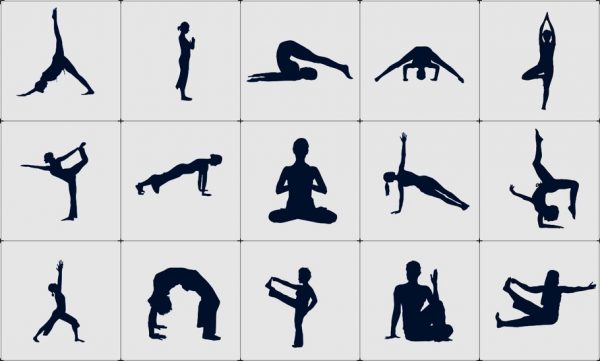
How to keep Body Muscles Flexible and Active
Do you give a miss for muscle stretching after your exercise? If the answer is yes then you should know that you should never give a miss to muscle stretch after your daily workout. It is not just to burn the extra few minutes of your class or workout. Instead, this is essential and is for good reasons. Stretching calves and hamstring or other body parts is important for various reasons. Incorporating stretching into our daily workouts or into our regular day on their own is just as important to health and body functioning as regular exercise.
The greatest advantage of muscle stretching is it increases the range of body motion.Muscles and tendons will work better after stretching. Because of increase in the motion, intensified workout, work or daily activities do not affect the muscle that much or the internal injury can be avoided. In other words the more conditioned muscles and tendons are, the better they can handle the rigors of sport and exercise, and the less likely that they will become injured.
The general advantage of muscle stretch is:
- Reduced muscle tension, relaxation and stress relief
- Increased range of movement in the joints
- Enhanced muscular coordination
- Increased circulation of the blood to various parts of the body
- relief from pain
- increased energy levels
- increased flexibility
- greater circulation of blood to various parts of the body
- reduces inflammation of muscle and relieves pain
- improved posture
- greater sense of well-being
Good reasons to stretch the muscles:
- Helping the body: It helps to increase and improve the flexibility and rang eof motion. With the age muscle becomes tighter and flexibility decreases. It results in slow movement and less lubrication of joins. This puts a shadow on the active life styles and hinders normal day to day motions. Also, the balancing act of the body and coordination becomes less and imbalance sets in. Tensed and tight muscles contribute to poor posture. Stretching helps to correct the posture by loosening the tightened muscle and relaxes the muscle. One can notice an overall improvement in spine alignment and overall postures of the body because of regular stretching.
- Enhanced body coordination: Maintaining the full range-of-motion through joints keeps us in better balance. Coordination and balance will help keep us mobile and less prone to injury from falls, especially as we get older.
- Blood flow: Stretching also helps to increase the blood flow of muscle. This means increase in blood flow brings greater nutrient supply to muscle. This helps in reducing the soreness and injury and helps in speedy recovery from muscle and joint injuries.
- For The Mind : When we are stressed out we have a tendency to hold the stress in our muscle. This is called tension of muscle. Instead of relaxation muscles contract and becomes tensed. This will have a negative impact on the body parts. Stretching is a powerful stress buster. Spending few minutes every day in stretching the body after exercise of after day to day activities helps to get out of the tension in mind and muscle. It helps to calm the mind, providing a mental break and giving your body a chance to recharge. Yoga and Pilates generally helps in body stretch that relieves the tension in mind and muscle.
- Muscle toning: Muscle stretches helps to shape up the body. It tone downs the muscle to get into proper shape and replaces the fat with good muscle.
Which are the exercises generally helps to stretch?
Gentle stretching by practicing yoga or Pilates is recommended. Start slow and allow muscles to understand the change in the exercise and to settle down for stretching. This way you will not injure your body parts by sudden stretches.
When to stretch the body?
- It is important to note that before any stretching muscles should be warm. A warm out work helps the muscle to stretch easily and becomes flexible.
- If a part of your body muscle need stretch first understand by feeling it. In other words, if you are aware that certain muscles are tighter than others, focus your attention on that particular muscle or those muscles that need good stretching.
- After your work out it is always good to stretch the body parts. Do it slowly and steadily. Do not rush to stretch.
How to stretch?
Warm up first: Warm up by walking while gently pumping your arms, or do a favorite exercise at low intensity for five minutes.
- Hold the stretch: Hold each stretch for at least 30 seconds It takes time to lengthen tissues safely. Hold your stretches for at least 30 seconds — and up to 60 seconds for a really tight muscle or problem area. For most of your muscle groups, if you hold the stretches for at least 30 seconds, you will need to do each stretch only once.
- Never bounce: Bouncing during stretching can cause injury or micro tears in muscles. The scar created by bouncing can tighten the muscle further causing more soreness and pain to body.
- Let it be pain free: If you feel pain as you stretch, you have gone too far. Back off to the point where you do not feel any pain, then hold the stretch.
- Relax and breathe: While stretching breath in and out – so that tired muscles will get good amount of air to relax.
- Stretch both sides: Make sure your joint range of motion is as equal as possible on each side of your body.
Stretching is thus very important. Do not overdo stretching, it is better to work within your limits.
Source:www.werindia.com
Image credit: https://www.needpix.com/photo/download/94651/yoga-meditation-spiritual-mental-hinduism-hindooism-exercise-exercising-physical-exercise (Free for commercial use)
Author: Sumana Rao | Posted on: February 23, 2016




















Write a comment